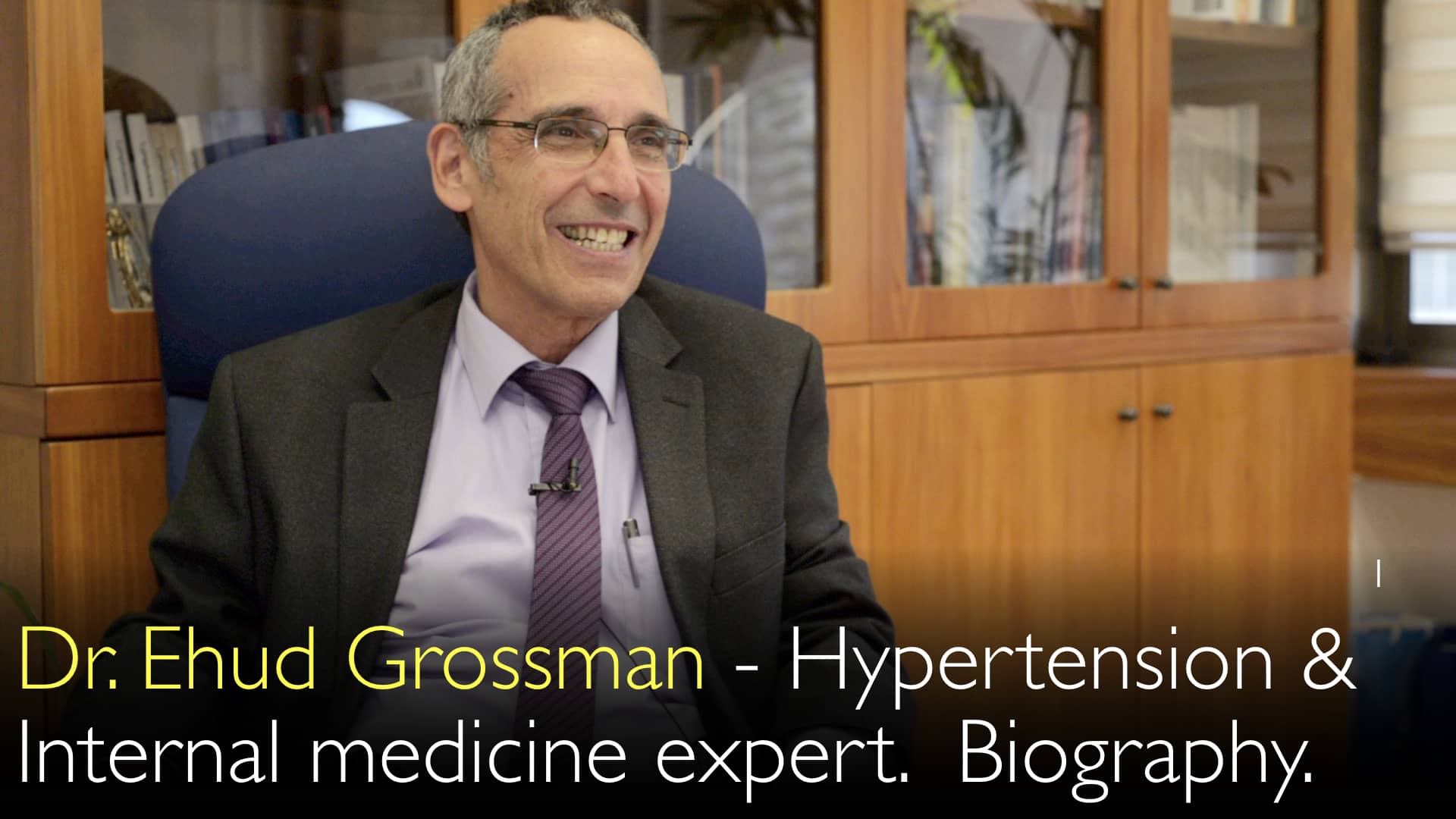O renomado especialista em hipertensão, Dr. Ehud Grossman, explica a evolução das metas de tratamento da pressão arterial. Ele detalha como dados recentes de ensaios clínicos unificaram os objetivos terapêuticos para pacientes com e sem diabetes. Dr. Ehud Grossman ressalta a importância crucial de atingir uma pressão arterial sistólica abaixo de 130 mm Hg. Essa meta mais rigorosa reduz significativamente o risco de eventos cardiovasculares graves, como acidente vascular cerebral e infarto do miocárdio.
Metas Ideais de Pressão Arterial no Tratamento da Hipertensão
Navegar para a Seção
- Evolução das Metas de Tratamento da Hipertensão
- Impacto do Estudo SPRINT
- Metas Atuais de Pressão Arterial
- Benefícios da Pressão Arterial Mais Baixa no Diabetes
- Implicações Clínicas para os Profissionais
- Transcrição Completa
Evolução das Metas de Tratamento da Hipertensão
As metas de tratamento da pressão arterial passaram por uma mudança de paradigma significativa. O Dr. Ehud Grossman, MD, explica que, até poucos anos atrás, as diretrizes diferenciavam os alvos com base nas comorbidades do paciente. Para a população hipertensa em geral, uma meta de 140/90 mm Hg era considerada adequada. No entanto, para pacientes com diabetes, recomendava-se um alvo mais rigoroso de 130/80 mm Hg, devido ao maior risco cardiovascular.
Essa distinção baseava-se em evidências que mostravam que pacientes diabéticos se beneficiavam mais com o controle intensivo da pressão arterial. A entrevista com o Dr. Anton Titov, MD, destaca como a pesquisa moderna transformou essa abordagem, levando a um padrão de cuidado mais unificado para todos os pacientes hipertensos.
Impacto do Estudo SPRINT
O estudo SPRINT (Systolic Blood Pressure Intervention Trial) foi um marco que redefiniu o tratamento da hipertensão. O Dr. Ehud Grossman, MD, ressalta que esse amplo ensaio clínico foi conduzido especificamente em indivíduos sem diabetes. Os resultados foram claros: uma meta intensiva de pressão arterial sistólica de 120 mm Hg mostrou-se significativamente superior à meta padrão de 140 mm Hg.
Pacientes que atingiram a pressão arterial mais baixa apresentaram uma redução drástica na taxa de eventos cardiovasculares. Essas evidências robustas exigiram uma revisão das diretrizes vigentes. Os achados do SPRINT forneceram dados sólidos para justificar a redução mais agressiva da pressão arterial em uma população mais ampla, como enfatiza o Dr. Ehud Grossman, MD, em sua discussão com o Dr. Anton Titov, MD.
Metas Atuais de Pressão Arterial
As diretrizes atuais da American Heart Association (Associação Americana do Coração) incorporam as evidências de estudos como o SPRINT. A própria definição de hipertensão foi rebaixada para valores de 130/80 mm Hg ou acima. Como resultado, a meta de tratamento para a maioria dos adultos é agora uma pressão sistólica abaixo de 130 mm Hg e uma diastólica abaixo de 80 mm Hg.
O Dr. Ehud Grossman, MD, esclarece que esse alho é agora universal. Não há mais metas diferenciadas para pacientes diabéticos e não diabéticos. A entrevista com o Dr. Anton Titov, MD, confirma que o padrão de cuidado é buscar "menos de 130, ou pelo menos próximo de 130/80" para todos os hipertensos, simplificando a decisão clínica.
Benefícios da Pressão Arterial Mais Baixa no Diabetes
Pacientes com diabetes obtêm benefícios significativos com o controle intensivo da pressão arterial. O Dr. Ehud Grossman, MD, afirma categoricamente que se observa "definitivamente uma taxa muito menor de eventos" quando a pressão arterial é reduzida para 130/80 mm Hg. Esses eventos incluem complicações graves, como acidente vascular cerebral e infarto do miocárdio.
Indivíduos com diabetes têm um risco consideravelmente maior de doença cardiovascular aterosclerótica. O manejo rigoroso da hipertensão é fundamental para reduzir esse excesso de risco. A conversa com o Dr. Anton Titov, MD, destaca que alcançar metas mais baixas vai além de um número—trata-se de oferecer resultados concretos e que salvam vidas em uma população de alto risco.
Implicações Clínicas para os Profissionais
Para os profissionais de saúde, essas novas metas exigem uma abordagem mais proativa no tratamento. Alcançar uma pressão arterial sistólica abaixo de 130 mm Hg frequentemente requer terapia combinada e ajuste cuidadoso da medicação. Os clínicos devem monitorar atentamente efeitos adversos, como hipotensão, desequilíbrios eletrolíticos ou redução da função renal, especialmente durante o tratamento intensivo.
A educação do paciente também é crucial. O Dr. Ehud Grossman, MD, explica a importância de ajudar os pacientes a entender as novas metas e suas razões. Essa tomada de decisão compartilhada, como destacado no diálogo com o Dr. Anton Titov, MD, melhora a adesão e capacita os pacientes a assumir um papel ativo no manejo de sua saúde cardiovascular, por meio de mudanças no estilo de vida e uso consistente de medicação.
Transcrição Completa
Dr. Anton Titov, MD: O senhor realizou muita pesquisa sobre as metas de pressão arterial para o tratamento da hipertensão em pessoas com diabetes, obesidade e hipertensão. O que é diferente nas metas de tratamento da hipertensão no contexto da obesidade?
Dr. Ehud Grossman, MD: É muito interessante porque, se você me perguntasse há três anos, eu diria que, em pacientes diabéticos, é preciso buscar metas de pressão arterial de 130/80, mas para a população em geral, metas de 140/90 eram suficientes.
Agora, com o estudo SPRINT, que foi feito em indivíduos não diabéticos, ficou claro que 120/80 é muito melhor que 140/90. É por isso que a American Heart Association sugere uma meta terapêutica de 130/80.
Eles também redefiniram a hipertensão. Agora, pressões arteriais acima de 130 por 80 caracterizam hipertensão.
No passado, havia uma diferença clara entre o alvo do tratamento em pacientes diabéticos e não diabéticos. Em diabéticos com hipertensão, buscávamos 130 por 80, e em não diabéticos, 140 por 90.
Atualmente, a meta é a mesma. Agora, deve-se buscar a mesma pressão arterial em diabéticos e não diabéticos—menor que 130 ou pelo menos próxima de 130/80.
Em pacientes diabéticos, observa-se definitivamente uma taxa muito menor de eventos—acidente vascular cerebral, infarto do miocárdio—quando se reduz a pressão arterial para 130 por 80.





